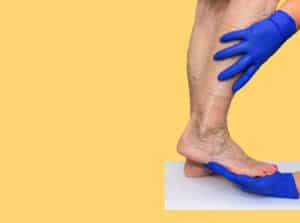
Symptoms of Poor Blood Circulation
Poor circulation can cause a wide range of symptoms, many of which don’t feel like circulation issues at all. The first sign that may occur is frequently having cold legs and feet. Additionally, one may experience:
- Swollen veins and arteries (varicose or “spider” veins)
- Aches or leg pain
- Numbness and tingling
- Restless legs and feet
- Swollen legs and feet
- Pelvic pain or discomfort
- Skin discoloration
- Heaviness in legs and feet
- Split, weeping skin
- Ulcers
- Lack of hair growth on legs and feet
- Toenails grow very slowly or stop growing
What to Do if You Notice the Signs of Poor Circulation
If you notice the signs of poor circulation, your first step should be to schedule a full check-up with your primary physician or with a vascular specialist. The abovementioned symptoms could indicate that care is needed to address a potentially serious health problem. Seeing a doctor helps you identify how to improve your health quickly and using conservative treatments. In addition to prescribing medication or performing necessary treatment, a doctor will also likely recommend some lifestyle remedies. These are not a substitute for professional medical care.
- Engage in regular low-impact exercise to promote blood circulation out of the feet and legs.
- Put your feet up. Who doesn’t like the idea of sitting back with their feet up at the end of the day? Doing so helps fluid and blood drain upward without such intense gravitational pull.
- Wear compression. A doctor may advise wearing compression stockings to counteract poor circulation.
- Do not smoke. If you smoke, talk to your doctor about programs that can help you quit.
- Eat a healthy diet to maintain a stable weight. The DASH diet is designed to lower blood pressure and improve blood circulation. It also helps reduce sugar intake to better-manage glucose levels related to diabetes.
What if you Need Treatment?
The conditions related to poor blood circulation can be concerning. We seek to minimize patients’ stress by providing an accurate diagnosis, clear, compassionate communication, and the most advanced treatments. To schedule a visit to our Laurel, MD vascular center, call (855) 803-6482.


Monday – Thursday: 9am – 5pm
Friday: 9am – 1pm
Saturday – Sunday: Closed